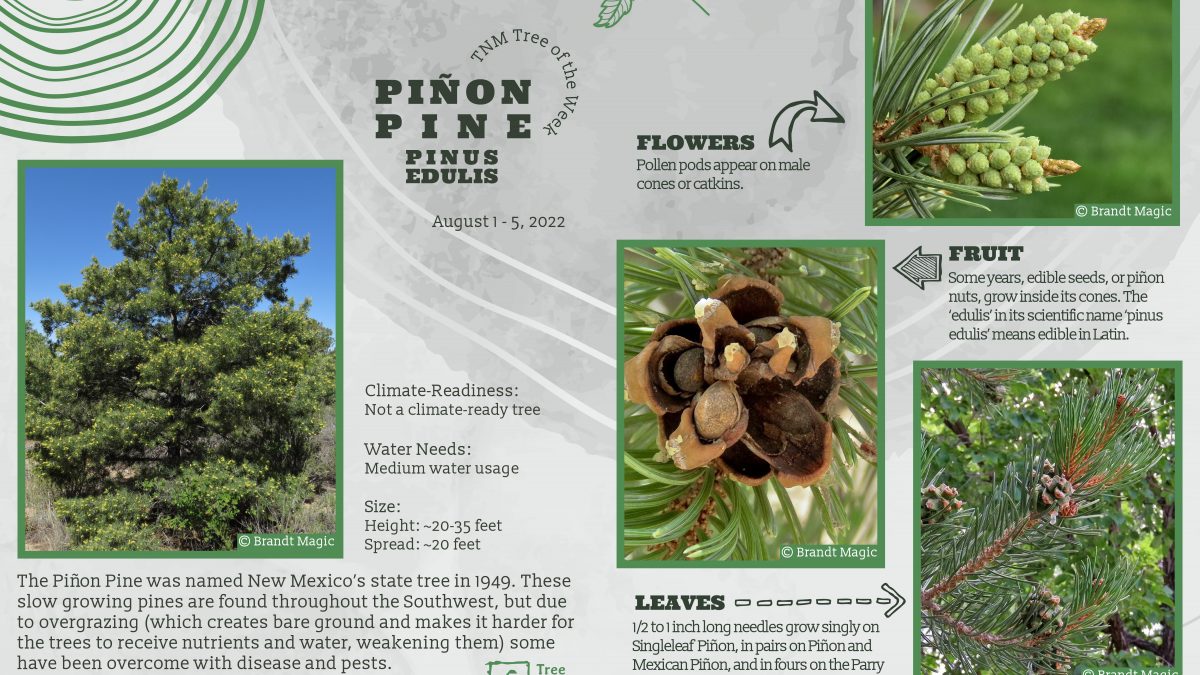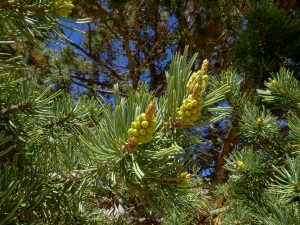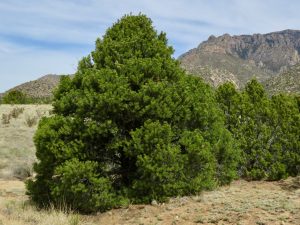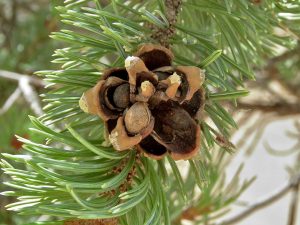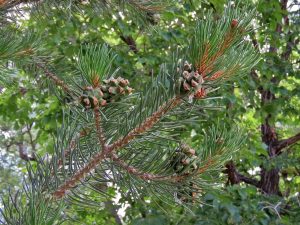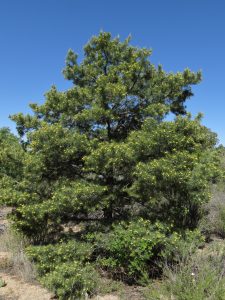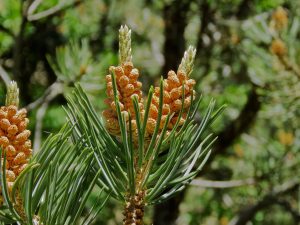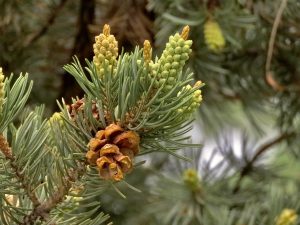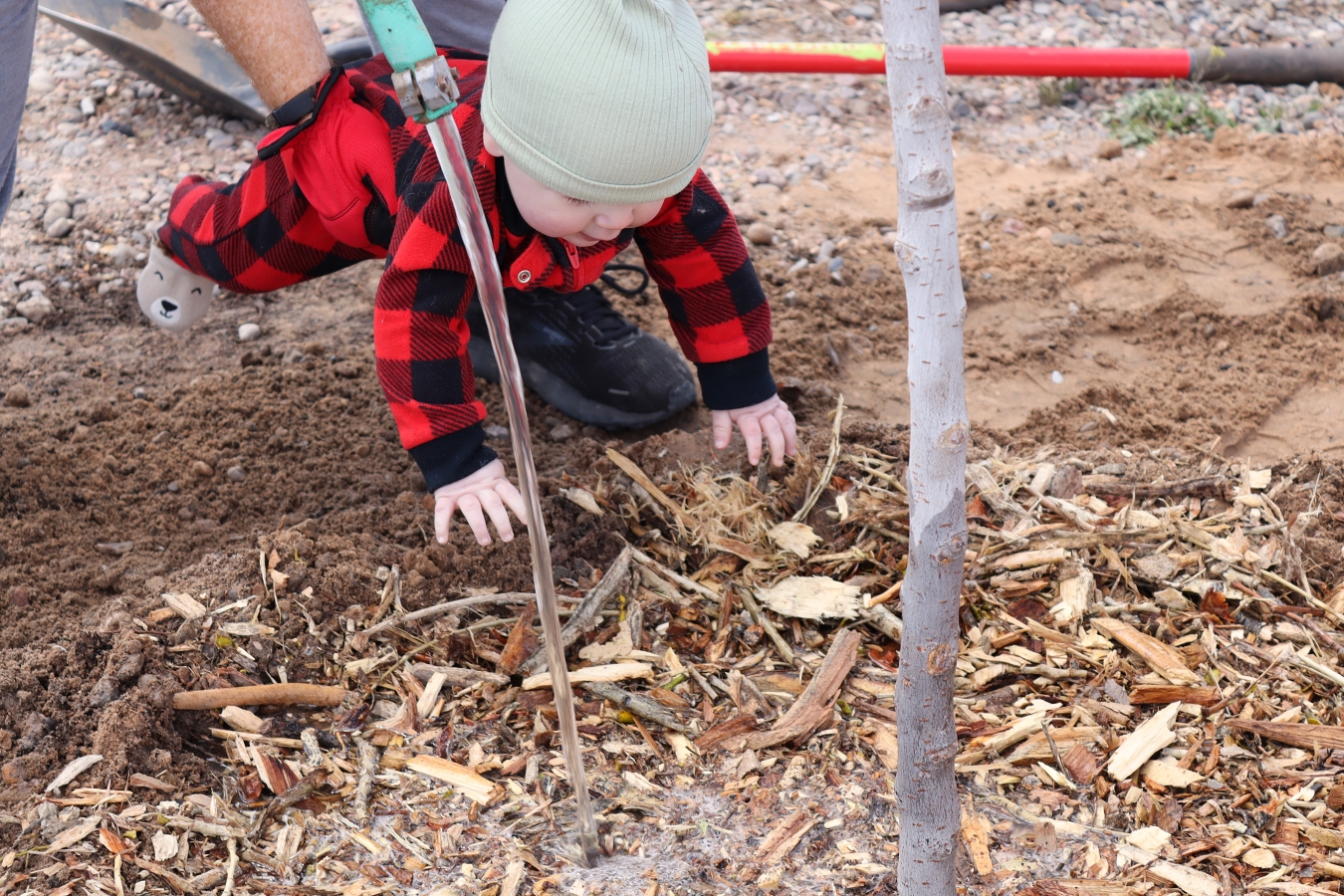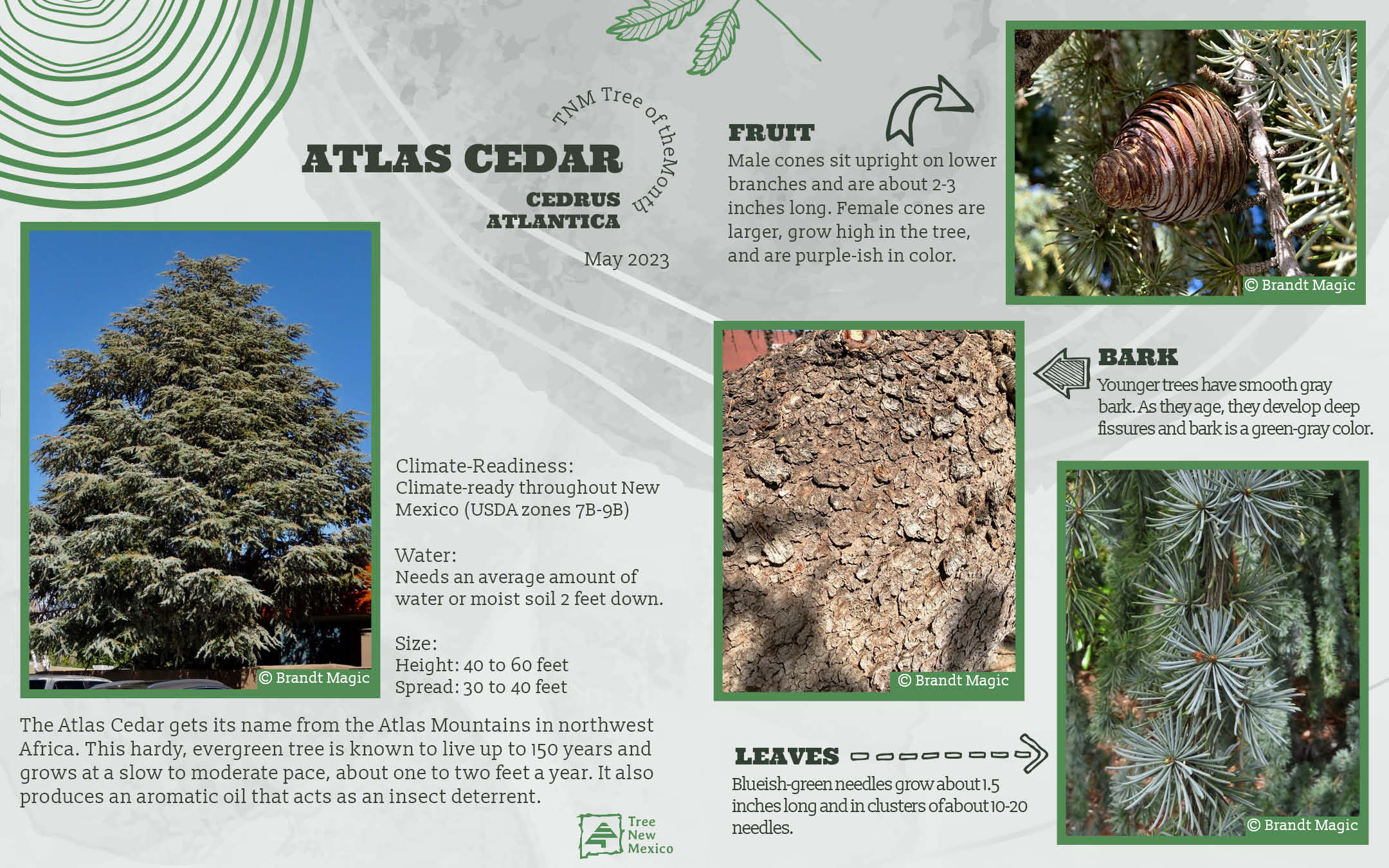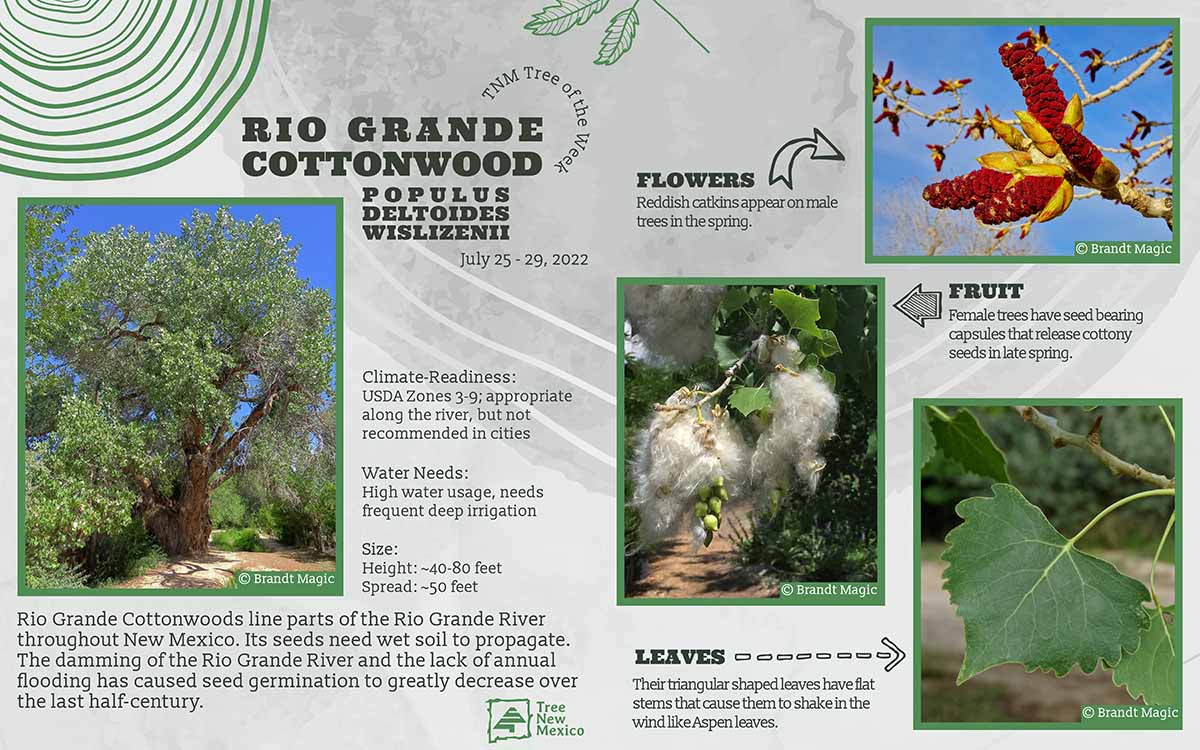
Rio Grande Cottonwood
July 27, 2022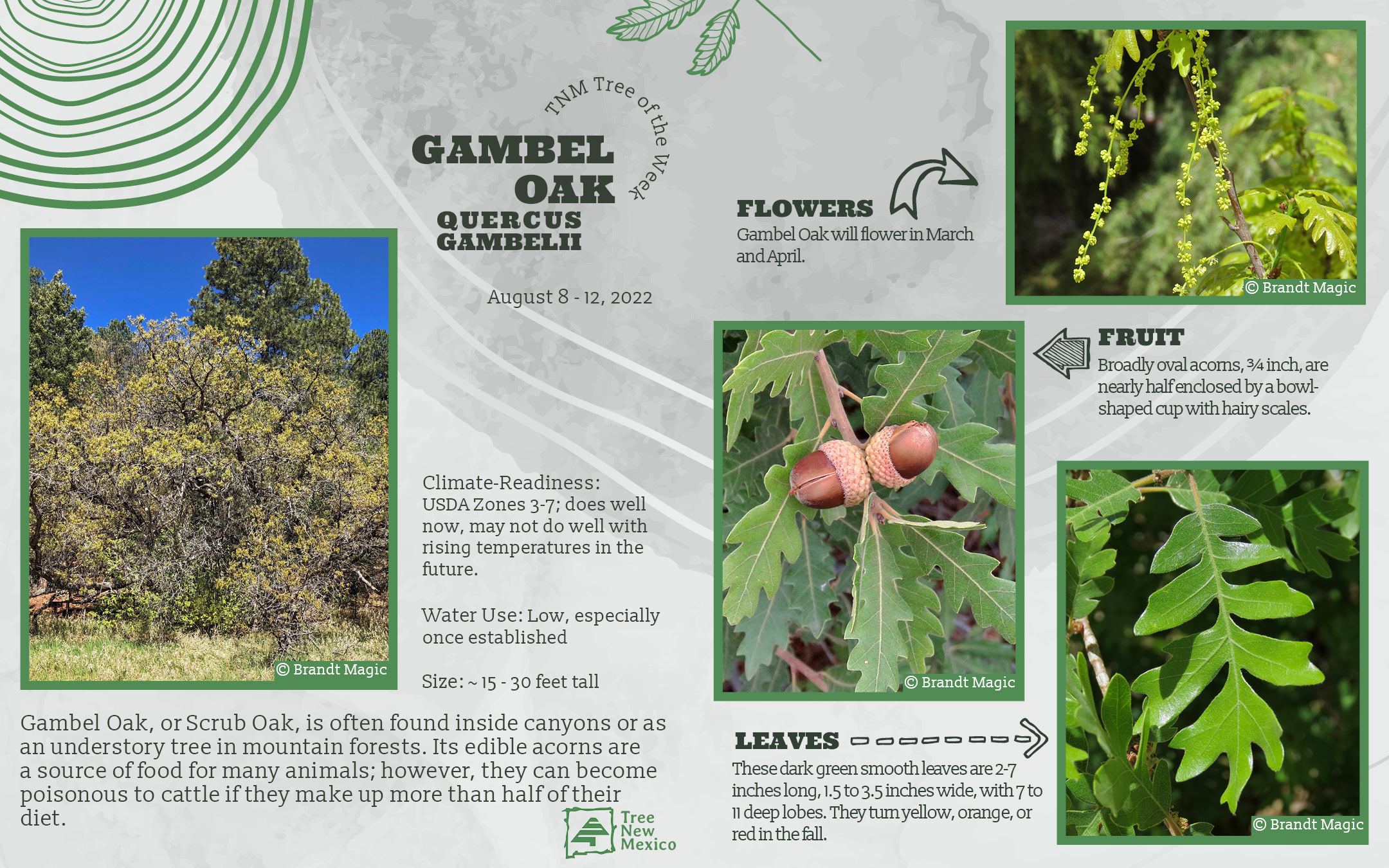
Gambel Oak
August 8, 2022Scientific names:
Piñon Pine = Pinus edulis
Mexican Piñon = Pinus cembroides
Singleleaf Piñon = Pinus monophylla
Parry Piñon = Pinus quadrifolia
Description: Piñon pines are small evergreen trees, often with an irregular, rugged appearance. Found in semi-arid regions of the west. Its seeds, called pine nuts, are an important food for indigenous peoples of our region and continue to be foraged and sold as a New Mexico delicacy. Harvest is inconsistent—some years trees bear abundantly, others not at all.
A diversity of piñon species can be found throughout and Mexico and the Southwestern USA, but the most abundant in New Mexico is Pinus edulis, usually simply referred to as piñon.
In autumn, pine nuts are harvested from the wild by local residents for local and gourmet markets. Piñons grow in foothills and other higher elevation regions, often with junipers. While slow growing, it thrives in cultivation under a wide variety of soil and moisture conditions. Piñons are extremely cold hardy and long-lived.
In the wild, piñon pines have recently experienced die-offs, caused by high temperatures and droughts making them vulnerable to attacks by bark beetles. Cultivated trees with occasional summer irrigation are much more resistant.
Needles: 1/2 to 1 inch long, and grow singly on Singleleaf Piñon, in pairs on Piñon and Mexican Piñon, in fours on the Parry Piñon. Needles have smooth margins, except for Mexican Piñon which has finely toothed edges.
Cones: 1 1/2 to 2 inches long, irregular roundish shape, containing edible seeds. Seeds have a thick husk.
Fruit: Large edible seeds; reddish to yellow-brown, oval to globular, 1-3 inches long, scales thick, resinous, seed diversely shaped, 1/2 to 1 3/4 inches long, oily, brown to black.
Height: 20 to 35 feet tall
Elevation: 4000 to 9000 feet.
Water Requirements: 12 inches precipitation equivalent, drought-tolerant, will not tolerate high water table and prefers good drainage. Once established, only requires a deep watering once a month.
Soils: Dry, rocky, gravelly soils. Adapted to a wide range of soils and moisture conditions.
Wildlife: Piñon jays, wild turkeys, squirrels, dears, and bears are among the animals attracted to its seeds
Pests: When weak and unhealthy, it is susceptible to Piñon Needle Scale and Bark Beetles
Uses: Windbreaks, food and cover for humans and wildlife. An iconic specimen tree. Can do well in lawns or xeriscapes alike, but needs more water at lower elevations.
- Piñon Pine needles and flowers (Ⓒ Brandt Magic)
- Piñon Pine (Ⓒ Brandt Magic)
- Piñon Pine pinecone and nuts (Ⓒ Brandt Magic)
- Piñon Pine pinecones and needles (Ⓒ Brandt Magic)
- Piñon Pine (Ⓒ Brandt Magic)
- Piñon Pine flowers (Ⓒ Brandt Magic)
- Piñon Pine flowers (Ⓒ Brandt Magic)
- Piñon Pine flowers (Ⓒ Brandt Magic)

